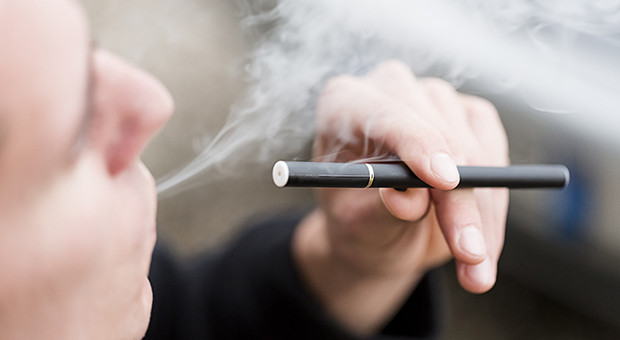
The increased use of electronic cigarettes and vaping products has increased the need to better understand how and if addiction to these products is different than in traditional cigarettes. One way to objectively measure addictive potential is through changes in the brain, but researchers say a limited number of methods currently exist to deliver the vapor (called aerosol) during magnetic resonance imaging, commonly called MRI.
Assistant Professor of Psychiatry and Public Health Sciences Andrea Hobkirk’s prototype device is designed to do just that — delivering up to four different aerosols during MRI scanning and mimicking the everyday use of a vaping device.
According to the researchers, the ability to deliver four different aerosols is important to compare flavorants often added to the vaping liquid. Penn State Clinical and Translational Science Institute’s Bridges to Translation Pilot Grant Program funded the research to develop the prototype, and Hobkirk and team recently reported their results in the journal Substance Abuse: Research and Treatment.
Safely and effectively delivering e-cigarette aerosol during MRI is important to determine what changes in the brain contribute to addiction of e-cigarettes, Hobkirk said, especially as it relates to the use of flavor, which law bans in traditional cigarettes. The pilot grant helped develop the MRI-compatible equipment, calibrated the amount of nicotine in the vapor and evaluated the device.
“With this new technology, we can determine if flavor characteristics change the addictive potential of nicotine-delivery products such as e-cigarettes,” Hobkirk said. “This research will translate to tobacco policy and treatment by helping us understand how flavored tobacco products contribute to nicotine dependence for new tobacco users and influence smokers’ ability to switch from traditional cigarettes to harm-reduction products.”
The research team reported that the device delivers nicotine effectively for human absorption and at the expected reduction in concentration due to the sticky nature of nicotine. They list several potential adjustments that can preserve the amount of nicotine that reaches the participant, including using Teflon tubing or shortening the tubing length. The team also can deliver consistent airflow at 10-second intermittent aerosol delivery using the device, with further research needed to allow additional variability. Importantly, MRI scan image quality is not affected by the use of the equipment.
The team is seeking additional funding to use the device to study brain responses to e-cigarette cues, including e-cigarette images and flavored aerosols, among regular users.
“Understanding how the brain responds to e-cigarette cues can provide information on how e-cigarette addiction develops in the brain, and how we might be able to treat it,” Hobkirk said. “Studying brain responses to cues can also help us to predict which e-cigarette products will be the most likely to result in addiction for new users.”
Hobkirk also is a former Early-Stage Investigator Training Program (KL2) scholar, which also supported her research in this area. She left the program when she was successful in securing a career development award from the National Institute on Drug Abuse. She ultimately wants to develop a translational research program related to smoking cessation and tobacco policy.
National Center for Advancing Translational Sciences, Penn State Highmark Gift Fund, National Institute on Drug Abuse and Pennsylvania Department of Health Tobacco CURE Fund supported this research.
Other researchers on this paper are Zachary Bitzer, Reema Goel, Craig Livelsberger, Neil Trushin and Jessica Yingst, Department of Public Health Sciences; Prasanna Karunanayaka, Sebastian Rupprecht, Christopher Sica and Jianli Wang, Department of Radiology; Brianna Hoglen and Kenneth Houser, Department of Psychiatry; Jonathan Foulds, Departments of Psychology and Public Health Sciences; John P. Richie Jr., Departments of Public Health Sciences and Pharmacology; Lauren Spreen, Department of Molecular Biology; and Qing X. Yang, Departments of Radiology and Neurosurgery – all from Penn State College of Medicine — and Ryan Elias, Department of Food Science, Penn State College of Agricultural Sciences.